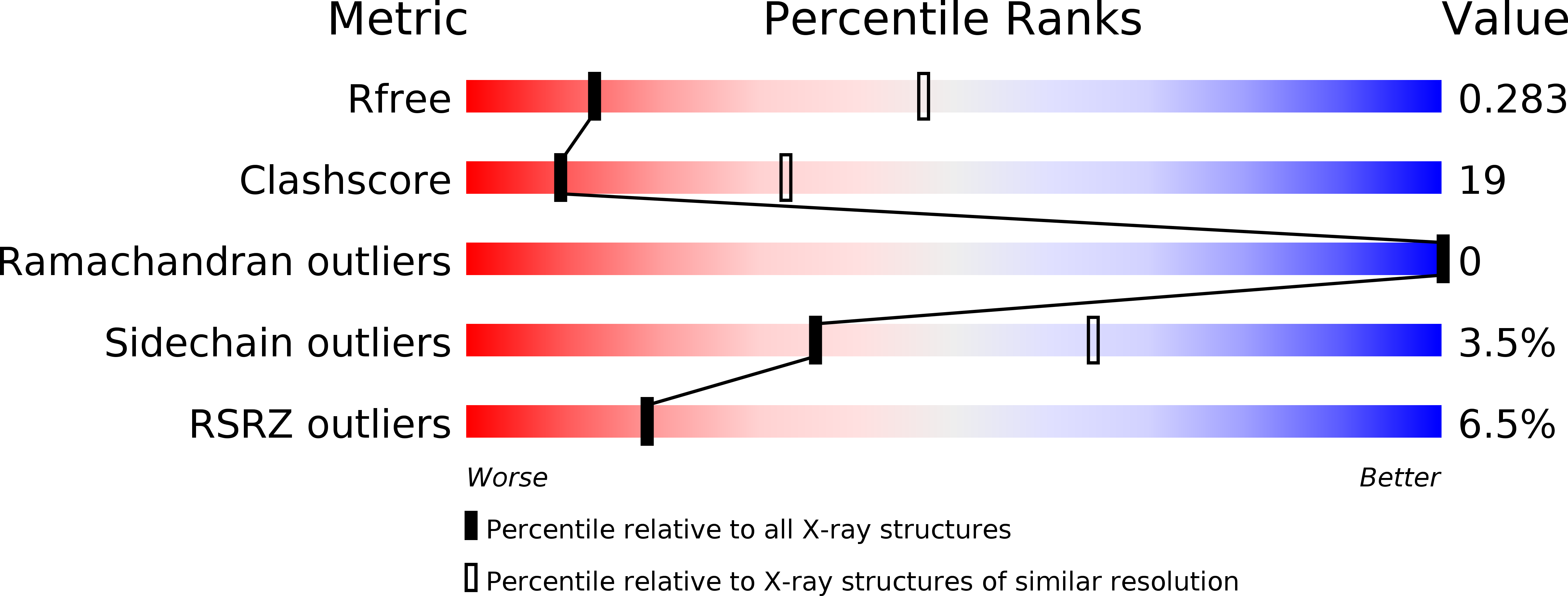
Deposition Date
2017-05-10
Release Date
2017-07-19
Last Version Date
2024-03-13
Entry Detail
PDB ID:
5VRE
Keywords:
Title:
Crystal structure of a lysosomal potassium-selective channel TMEM175 homolog from Chamaesiphon Minutus
Biological Source:
Source Organism:
Chamaesiphon minutus PCC 6605 (Taxon ID: 1173020)
Host Organism:
Method Details:
Experimental Method:
Resolution:
3.30 Å
R-Value Free:
0.28
R-Value Work:
0.25
R-Value Observed:
0.26
Space Group:
C 1 2 1


